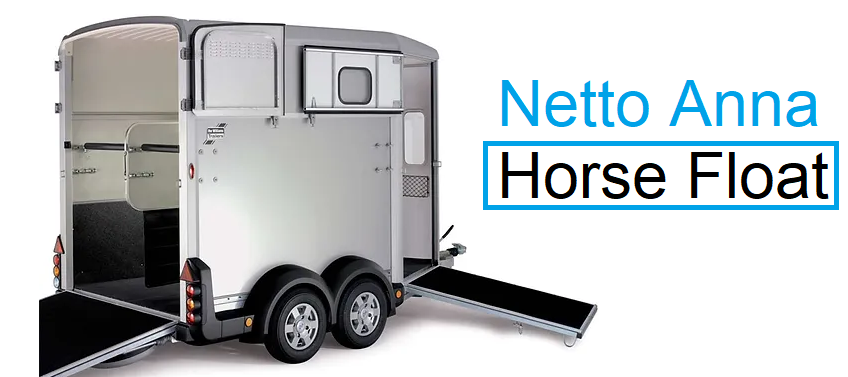Blog
Horse Float Safety Tips for First-Time Buyers
horse float safety tips Australia , Purchasing your first horse float can be both exciting and overwhelming. The safety and comfort of your horse during transport are top priorities, making it crucial to select the right float. Whether you’re taking short trips or longer hauls, understanding key safety elements is essential. Below are some helpful horse float safety tips for first-time buyers to ensure your horse remains safe on the road.
1. Choose the Right Size for Your Horse
The size of the float directly impacts your horse’s comfort and safety. A float that’s too small can cause distress, while one too large may lead to instability during transit.
- Adequate Height and Width: Ensure the float provides enough headroom and width for your horse to stand comfortably.
- Allow for Movement: Your horse should have enough space to shift its weight slightly, reducing stress and injury risk.
2. Inspect the Float for Structural Integrity
Before purchasing, check the float’s overall build quality. Ensure it’s made from durable materials and free from rust, cracks, or wear and tear.
- Durable Construction: Look for floats made from galvanised steel or aluminium, known for their durability and rust resistance.
- Check for Repairs: If you’re considering a used float, ensure any repairs were done correctly to avoid compromising its structural integrity.
3. Ensure Proper Ventilation
Good airflow is essential for keeping your horse comfortable during transport, especially in warm climates like Australia.
- Ventilation Windows and Roof Vents: Ensure the float has adjustable ventilation windows and roof vents to regulate the temperature and circulate fresh air.
- Avoid Overheating: Ensure the float provides shade, and never leave your horse unattended in hot weather for extended periods.
4. Check the Flooring and Ramps
Floors and ramps must be in excellent condition to prevent slips and injuries during loading, unloading, and transport.
- Non-Slip Flooring: Opt for rubberised, non-slip flooring to provide secure footing.
- Safe Ramp Design: The ramp should be wide and have a gradual slope for easy, safe loading and unloading.
5. Consider the Braking System
A reliable braking system is critical for horse float safety.
- Electric Brakes: Most modern floats come equipped with electric brakes, which offer better control, especially when towing a fully loaded float.
- Brake Controller: Install a brake controller in your vehicle for smoother stops by adjusting the brake force according to your load.
6. Use Safety Chains and Breakaway Systems
Safety chains and breakaway systems are crucial in case of hitch failure.
- Secure Safety Chains: Make sure safety chains are securely fastened to both the float and your vehicle.
- Breakaway Systems: A breakaway system applies the brakes if the float detaches from the towing vehicle, preventing accidents.
7. Check Tires and Suspension
The tires and suspension directly affect the safety and comfort of the ride.
- Tire Condition: Inspect the tires for signs of wear, and ensure they are properly inflated.
- Proper Suspension: A good suspension system helps absorb bumps and provides a smoother ride for your horse.
8. Know the Towing Capacity of Your Vehicle
Make sure your towing vehicle can safely handle the weight of the horse float and the horses.
- Check Manufacturer Specifications: Consult your vehicle’s manual to verify its towing capacity. Consider the weight of the float, horses, and any equipment.
- Weight Distribution Hitch: Use a weight distribution hitch to evenly spread the float’s weight, enhancing stability.
9. Practice Safe Loading and Unloading
The loading and unloading process should be smooth and stress-free for both you and your horse.
- Load One Horse at a Time: Keep the process calm by loading one horse at a time, ensuring each is secured before loading the next.
- Stay Calm and Confident: Horses can sense anxiety, so maintain calm and confident handling throughout.
10. Regularly Maintain Your Horse Float
Routine maintenance ensures your float remains safe for each trip.
- Inspect Regularly: Before every journey, check the tires, brakes, hitch, lights, and safety chains.
- Annual Servicing: Schedule a professional service annually to check the structural integrity and braking systems, ensuring long-term safety.
Conclusion horse float safety tips Australia
As a first-time buyer, investing in a safe, high-quality horse float is crucial for your horse’s well-being and your peace of mind. From choosing the correct size to regular maintenance, following these safety tips will help you make an informed decision. With the right float, you can transport your horses confidently and safely.
For more information or to view our available horse floats, visit our Horse Floats for Sale page or learn more About Us. We are proud to be the Best Horse Float Reseller in Australia, offering top-quality floats to suit all your needs. Contact us here today for more information!
Check out more listings on Gumtree for other horse float options

